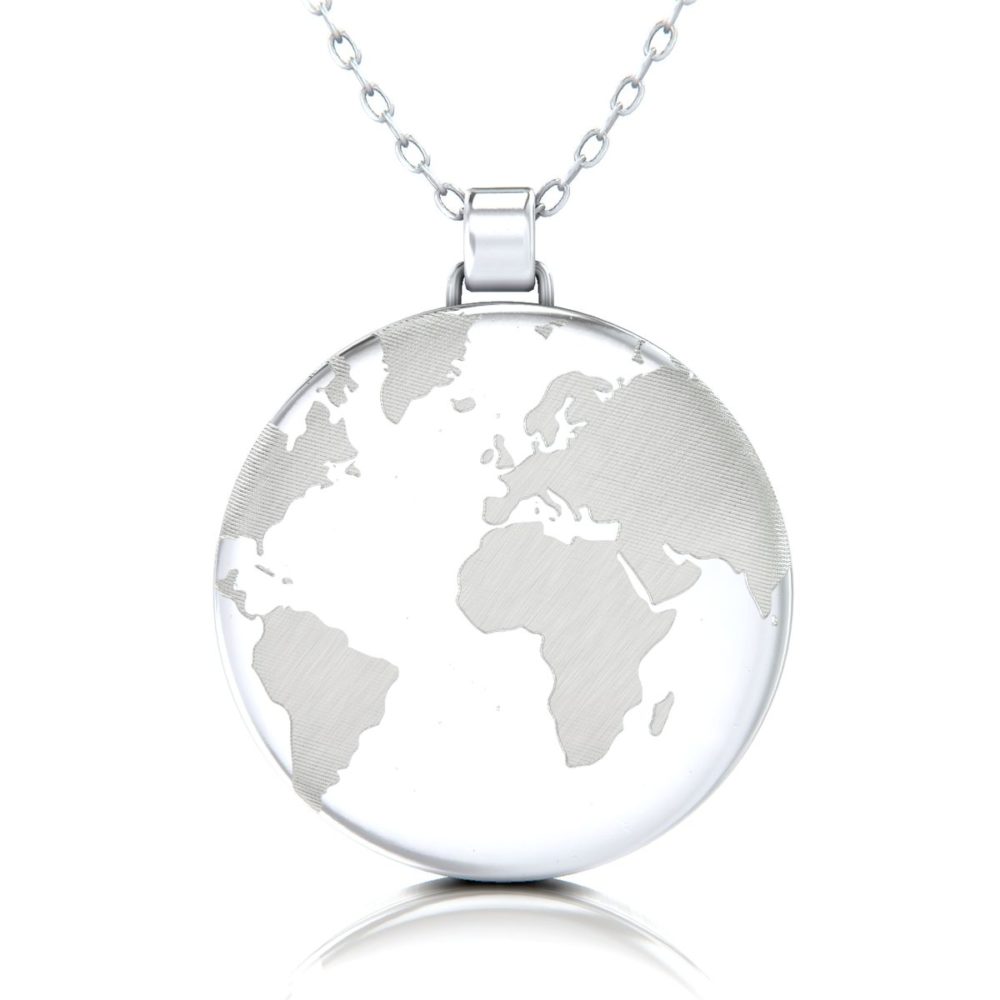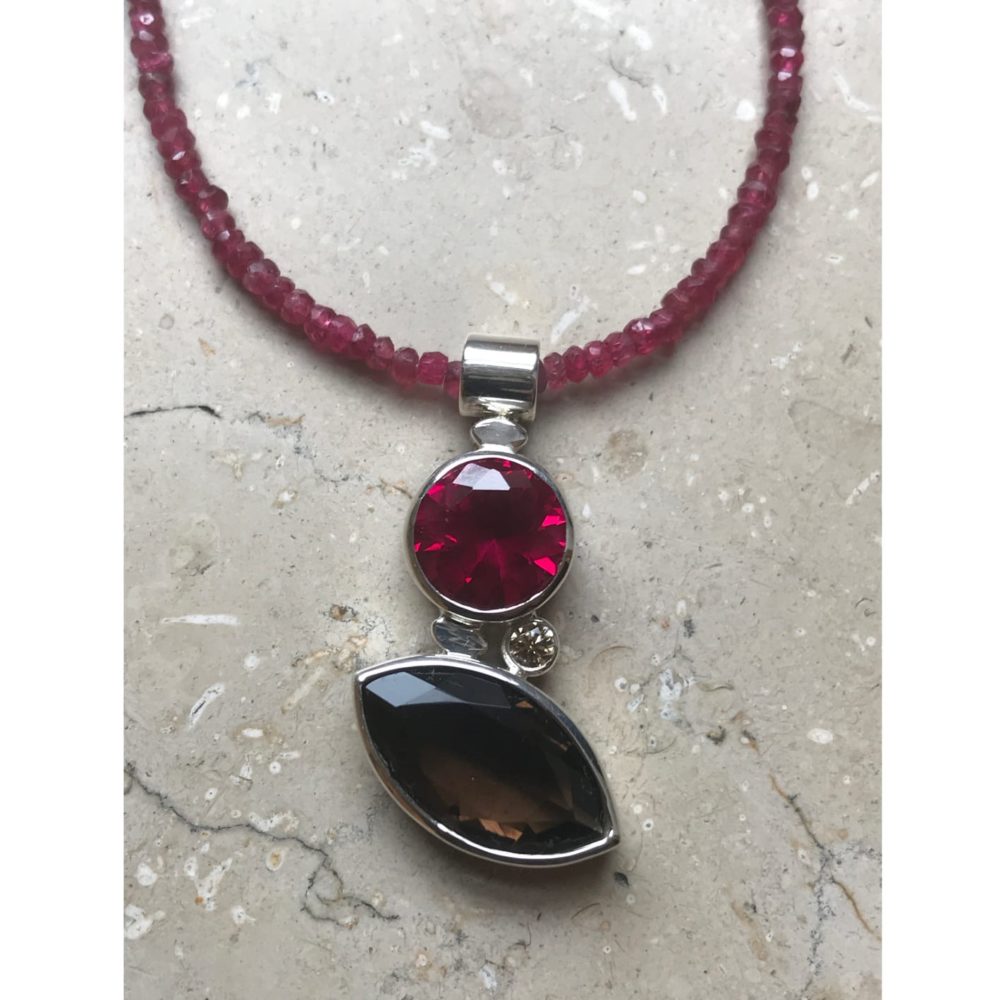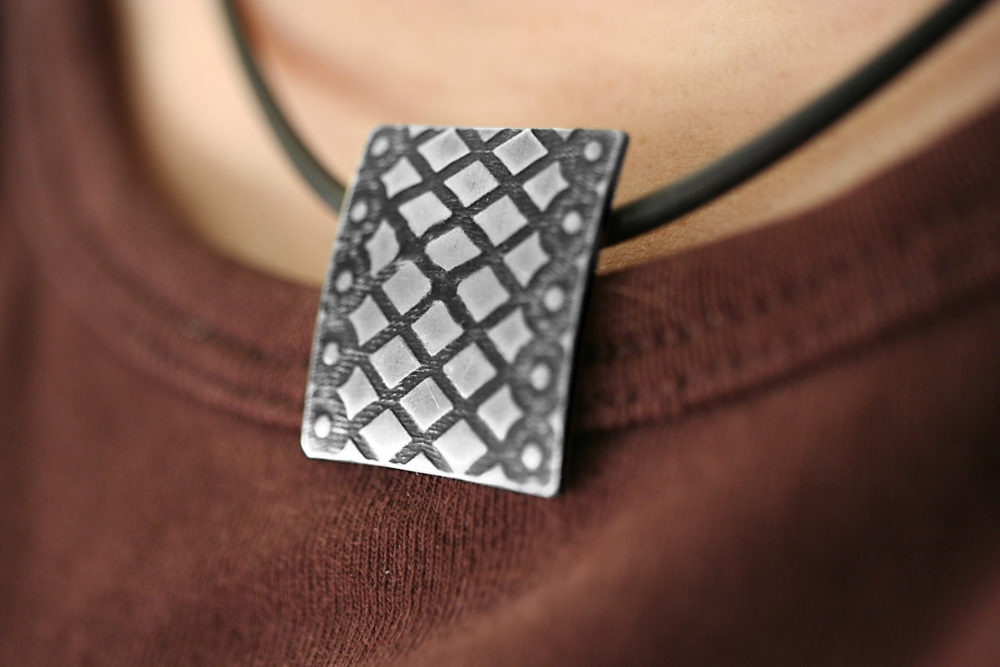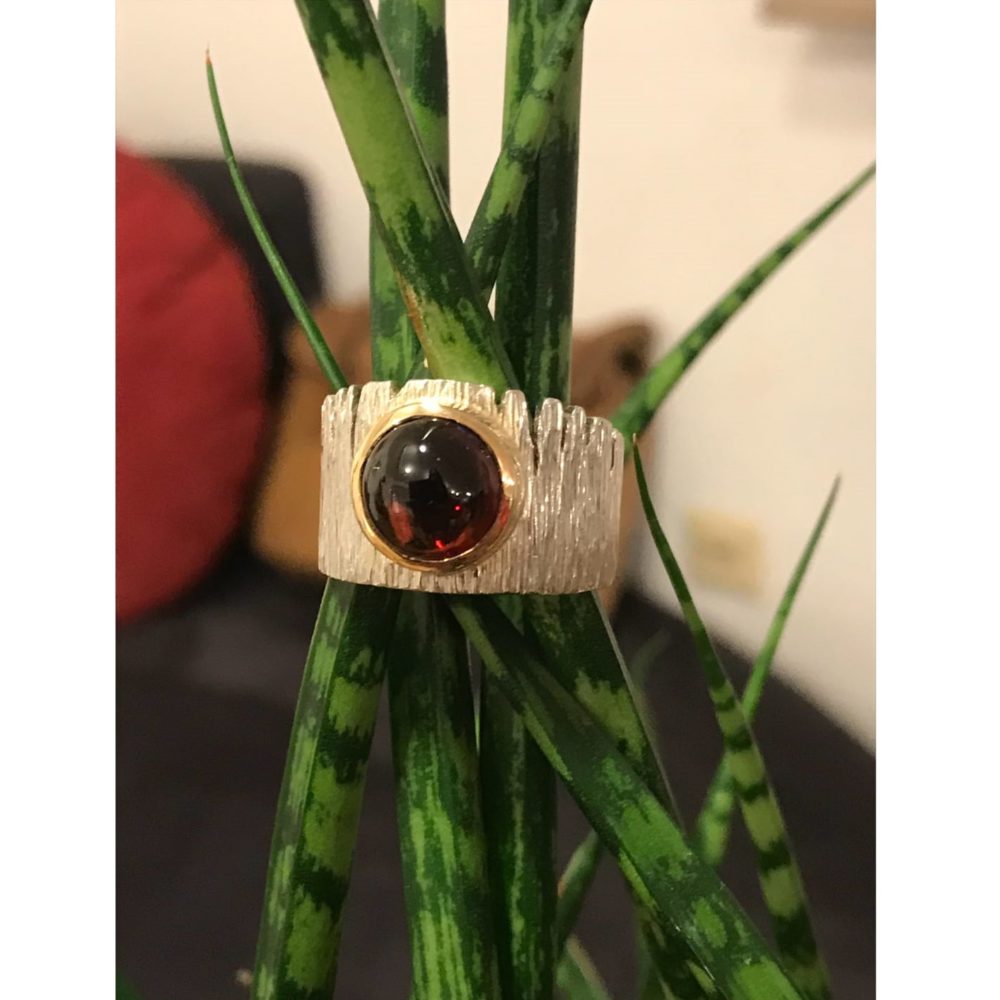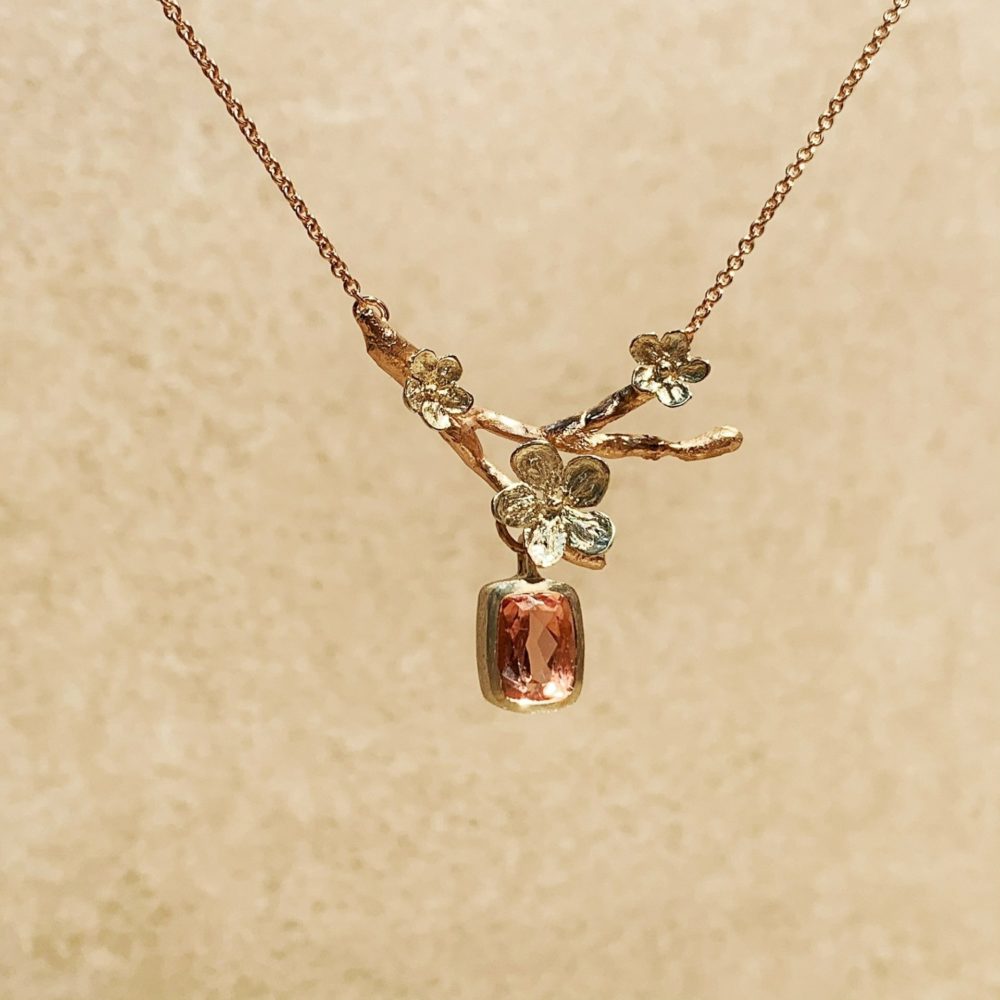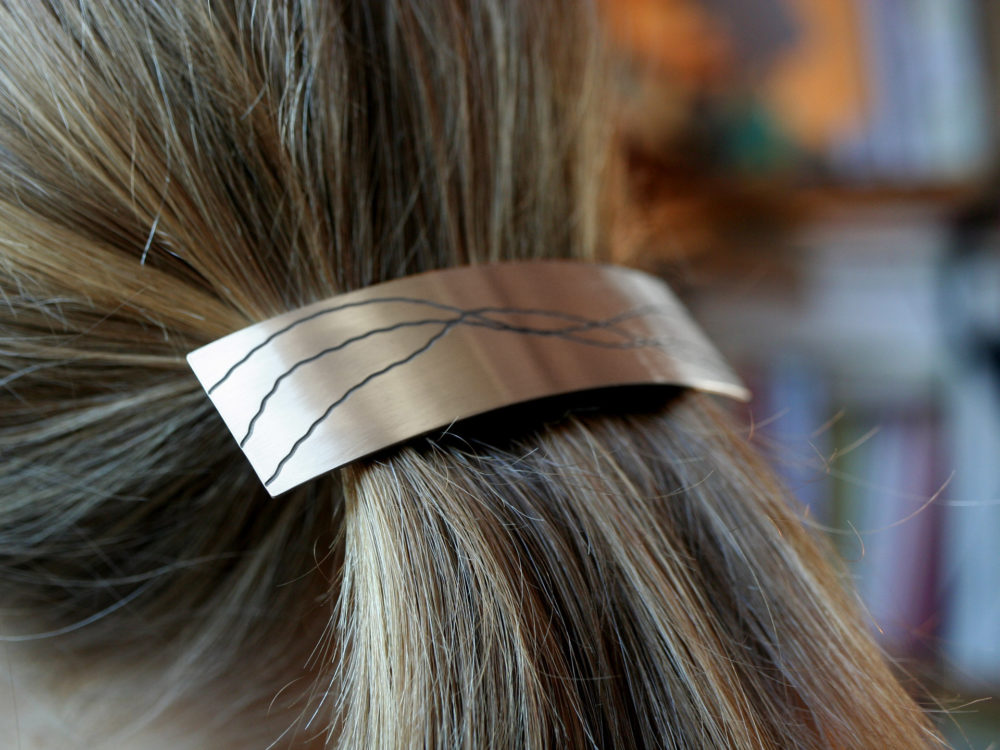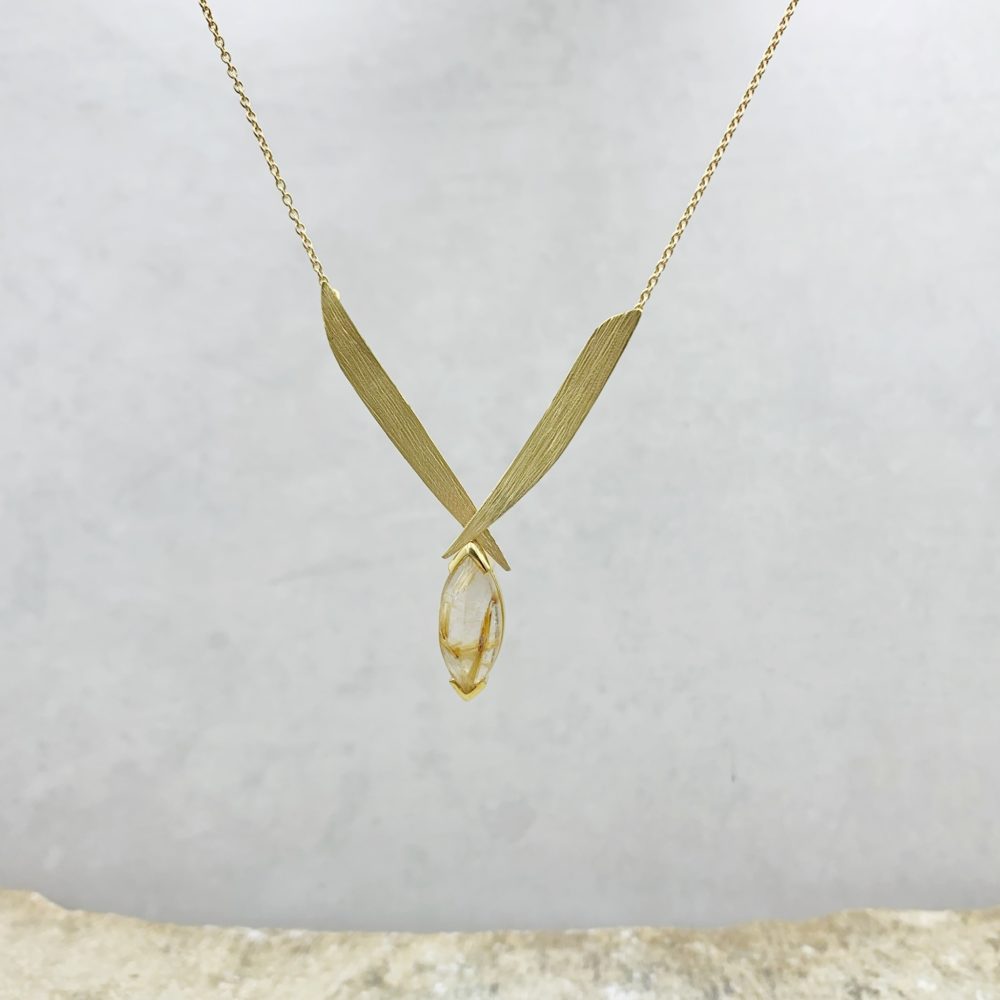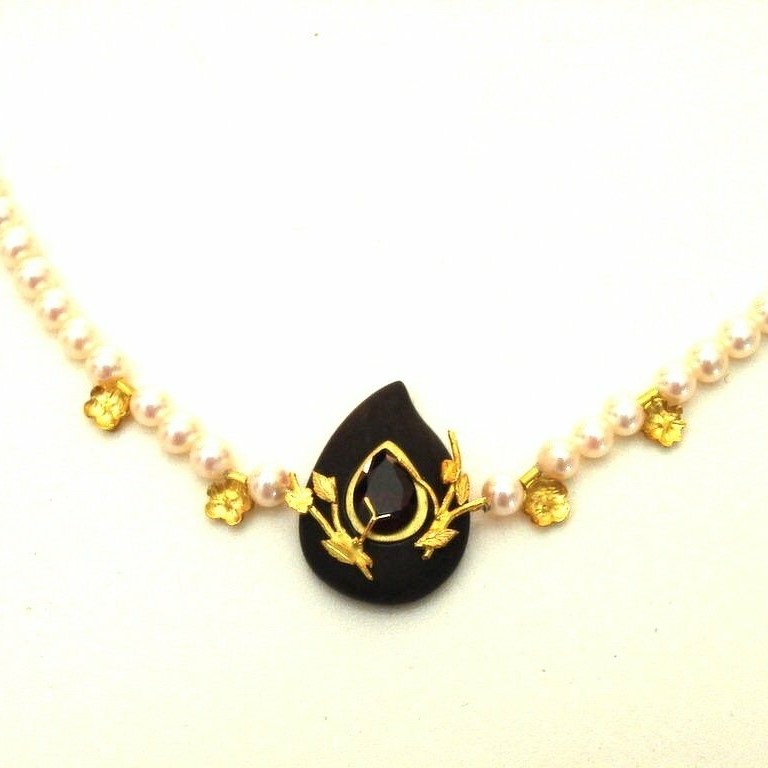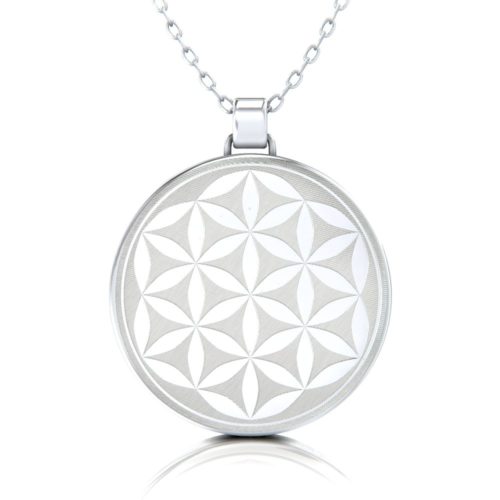Diamond
It has been indispensable as jewelry for decades. Actually just is a quarter of the worldwide production as gemstones useful. The diamond is most frequently used in industry.
Its radiance is breathtaking and on top of that it is harder than any other gemstone. The diamond went down a long and rocky road, to get to the top and thus to the most sought-after gemstone in the world to become.
He's the only one too, the one international evaluation scheme runs through and where the trade is controlled in this way. No other jewel has such a sophisticated marketing system as the diamond.
In the following paragraphs you can read everything about the sparkling natural stone.
Definition diamond
Structure of the diamond
A diamond is purest carbon, which has been modified and can usually be found in cubic form. So that carbon can exist in this state, need it high pressure and temperature. Crystals form on the diamond, which are mostly octahedral. Tetraedene, dodecahedan and cubic crystals are rare, but do occur. Graphite, Along with diamonds, Lonsdaleit and Chaot are also carbon phenomena, but hexagonal.
Edelstein / Edelstein
The diamond is one of the most valuable of all gemstones. That was not always so. In the Middle Ages, only the ruby was used, the emerald and generally colored gemstones are viewed as jewelry.
So that a stone can be called a gemstone, he must meet certain criteria. He must Rare, transparent and at least a Mohs hardness of seven exhibit. The diamond fulfills all requirements. Although it is not as rare in nature as many think.
Determination criteria
When is a diamond a diamond?
Appearances are sometimes deceptive. Just because a rock looks like a diamond, it doesn't have to be one. So that a stone is awarded as a diamond, several criteria are required:
● Density
● hardness
● thermal conductivity
● Light scattering or dispersion
● Shine
● Refraction or refraction
● Type and formation of existing inclusions
A diamond isn't colorless, he can blue, yellow, be red and brown. There are other shades as well, but which are seldom to be found. The reason for this lies in the carbon lattice, which can sometimes contain foreign elements such as phosphorus or boron.
With a colored diamond, there is another measure, to distinguish an artificially colored from a natural colored one. This is called absorption spectroscopy.
Types of diamonds
Not all of the precious specimens look the same. They differ by Origin and color. Depending on the type, they find their application, either as jewelry or for industry. The following applies to natural ones, the rarer the higher their value.
Natural diamonds
That is considered a real diamond, that in the earth's mantle at temperatures between 1200 and 1400 Degrees Celsius and extremely high pressure. They get up through an eruption. The mining takes place in mines, but also in the water and even in the desert. The diamond can be estimated for its age through the inclusions.
Only a diamond of natural origin may be used as jewelry and under no circumstances an industrial diamond. It also serves as a tool for industry.
„Fancy“ Diamonds
Different colors and their famous representatives
A diamond is mostly transparent and appears colorless. When light falls, they shine in a wide variety of colors. Except for flawless ones, they all have tints, which range from yellowish to brownish. Then there are those in pure colors with names “Fancys”. However, these are Rare to be found in nature, one of 100.000. The reason for this lies in the inclusions of different substances. The strength of the intensity and the luminosity of the colors increase the value of the stone. There are now between the six to seven main tones 300 Deviations have been found. The diamonds below are sorted by rarity and one or two famous representatives are featured.
Red diamonds
Of the rarest color type is the red one. That makes him most expensive diamond. Crystal effects are believed to be responsible. Almost all of them come from Argyle Mine in Australien.
The best known is that Red Diamond: With 35 Carat in gross weight. He has polished 5,11 Carat and is called Red Shield.
Pink or rose diamonds
He treats impurities as the reason for the pale hue. This diamond is the second oldest.
The most famous among them is the Steinmetz Pink: In the facet cut it has unbelievable 59,6 Carat and is flawless inside. After its auction 2013 is his name Pink Dream.
Blue diamonds
Second rarest, next to the pink diamond, it is available in blue, which is colored by the element boron. Two well-known are among them:
Hope Diamant
The glittering stone, originating from India, is the largest blue, that was ever found, With 45,52 Carat sharpened. The diamond is said to have a value between 200 and 250 Have millions of dollars. A legend has it, that it once belonged to the Indian deity Vishnu, and since it was stolen from her, is cursed.
Blue Wittelsbacher
A weight of 35,5 It has carats and a diamond shape. It was part of the Austrian and Bavarian Crown Jewels. It is now privately owned and has the new name Wittelsbacher Graff and is a few carats smaller due to various facet cuts.
Brown diamonds
Defects in the crystal lattice are likely to be the trigger for the brown diamond. The two largest and most famous are:
Earth Star
When sanded, it shows 111,6 Carat.
Lesotho Promise
2006 he was discovered, he weighed unpolished 603 Carat and got the highest rank on the list of the largest colored diamonds.
Green diamonds
The green gem is not often found. Its appearance comes from radiation defects. One of the most famous and greatest among them is that:
Green Dresden
In the raw state he weighed 41 Karat. It is dated to the year 1722. The origin of the diamond is debatable. On the one hand, he should give the Shah Shahan, the builder of the Taj Mahal and on the other hand he is a Brazilian find. With a pendulum cut, it is located in the New Green Vault in Dresden.
Yellow diamonds
A diamond, the no “Fancy” is, often has yellowish discoloration. This one has a full one, intense yellow, therefore canary yellow is also used. The level of nitrogen content is decisive, the higher, the more yellow. The best known is: ● Tiffany. With 128,51 Carat it is also the largest yellow diamond, that was ever found.
Synthetic Diamonds
When 1955 for the first time a diamond could be produced artificially, that was a sensation. You are a lot more affordable than the real diamond. However, they are not to be used as gemstones, a blessing for industry, however.
Graphite was compressed in a hydraulic press under high pressure and temperature. It is called High pressure high temperature process. In later years, other manufacturing variants were added.
Benefits, that make the diamond valuable
Compared to other gemstones, the diamond has properties, that stand out from the crowd.
Hardest substance
When "unbezwingbar“He becomes from the Greek from adamas and the Late diamond translated. The Greek philosophers Plato and Theophrast already called him adamas.
In fact, the diamond is the hardest naturally occurring substance on earth. On the Mohsskala he reaches the Hardness ten, the highest achievable value. Compared to the second hardest material, corundum, which has a Mohs hardness of nine, the diamond has a grinding hardness 140 times higher according to Rosiwal. Noteworthy is to be said, that other types of gemstones such as ruby and sapphire are also marked with a hardness of nine on the Mohs scale.
Due to the fact, a diamond can only be cut with another diamond, because the hardness is different due to different crystal orientations.
Durable for a lifetime
The faceted diamond owes precisely to this extraordinarily high hardness, that it does not lose its shine and luminosity. Any other gemstone would fade in a few years after being constantly worn as jewelry. Hence, the diamond is the ideal choice as a marriage- and engagement ring. It lasts forever.
Significant as a gemstone
Because of the long durability, which arises from the extremely hard substance, The diamond takes the highest priority and the precious stones. In addition, there is the sparkling radiance due to the high refraction and dispersion of cut stones, which he used as jewelry for rings, Make necklaces and bracelets essential.
Diamond Bracelet
As a timeless classic
Regardless of the occasion, it can just be worn forever. The diamond bracelet does not look too intrusive and is elegant and classy on the wrist at the same time. There are different designs for every occasion, among which to choose, the matching piece of jewelry underneath.
Solitaire bracelet
"Simple" is capitalized on the solitaire bracelet. The "loner" as the word solitary is translated from French, is marked by it, that only a single jewel adorns the bracelet. The fact makes the jewelry all the more elegant.
Tennis bracelet
With the tennis bracelet, it seems as if only precious stones nestle around the wrist. The borders cannot be seen. Thanks to the skilful technique, every diamond appears skillfully.
Charms with diamond bracelet
Who is less simple, but rather playful and extravagant, for them the diamond bracelet with charms is the ideal choice. In addition to the diamonds there are also imaginative figures like hearts, Shamrock, Animals and many more can be seen on it.
Diamond bangle
Here you don't have to deal with a movable bracelet, but to do with a rigid bangle. Every single shimmering stone is attached to the hoop by a pave border, which is barely visible, held. A multitude of small diamonds surround the joint with the greatest elegance.
Jewelry fastening
So that the special jewel on the jewelry base, ob Ring, The bracelet or chain will stick, A well thought out fastening method was chosen. The diamond will be there not glued or otherwise pinned, but he is well enclosed in a precious metal. So it is well fixed and still comes out visibly. Most commonly used material for this is platinum. It has the least amount of abrasion and therefore the most secure hold.
Every now and then it happens anyway, and the stone enclosure is affected by a violent shock or fall. In the best case scenario, a specialist from the Stone setting control be consulted. Generally speaking, diamond jewelry should be regularly checked become.
Replacement for diamond jewelry
For whom a real diamond is too expensive, he can use an alternative method
Diamond coating
Diamond plating in marriage, Trau- and engagement rings this is a classic practice. The metallic top of the ring is ground off with an industrial diamond cutter. Patterns and motifs are a popular option.
The process enhances a stone-free ring, because it gives it a glittering surface. With those rings on which there is a small diamond, or several small ones, the additional diamond coating helps, that they look all the more sparkling.
The downside of that is, that no matter how beautiful the ring is, only remains beautiful for a few years. The surface is worn out after prolonged use. It cannot be treated afterwards. When it is reworked with the milling machine, it is impossible, to hit the same places exactly.
Zirkonia
Zirconia is another alternative to diamond, an imitation diamond. It is a man-made product. At first glance it looks astonishingly similar to the diamond.
By far, zirconia cannot compete with the quality of diamonds. That is why it is perfect for costume jewelry, because it cannot accompany you for a lifetime. After prolonged wear, it fades and becomes cloudy and prone to breakage.
Cuts
The shine is only achieved through the right cut, better said that "Fire" of a diamond evident. Nowadays there are a number of types of cut thanks to sophisticated techniques.
Shiny
It is the most famous and most dazzling of the diamonds. The facets are laid out in this way, that the highest light output, so the highest shine and radiance is made possible. The entire spectrum of the rainbow shines. At the top he has a crown, in the middle a girdle, the widest part of the diamond and at the bottom it runs to a point.
heart
With the diamond is the shape, those of a heart. The facets move in the area 56 and 58 piece. It is one of the rarest cuts.
Shuttle oder Marquise
The Navette has a very special and elaborate shape, that of a ship's hull. That is why there is sometimes talk of a boat. Marquise is also named after the Marquise Jeanne de Pompadeur. She was the mistress of King Louis XV. Their preference was the two-pointed fashion. The two-pointed diamond was christened in her honor. The fire should be emphasized as with the diamond.
drops
There are additional names for it, such as pear shape, Pendeloque or teardrop shape. It is made up of the cut shapes of the round brilliant and the pointed navette. 58 Facets are the norm, can vary with the diamond.
emerald
Also called the emerald cut, it got its name from the emerald, because it has this cut. It belongs to the step cuts, that look like stairs. This is to emphasize the purity. The long drawn out ones, parallel facets distinguish it.
Princess
It is a mixture of brilliant- and step grinding. The waiter- and bottom result in a square base, from each of which a pyramid stands out.
Cut diamonds
The 4 c’s the quality
After which the special gemstone is processed, above all was sanded, he is judged according to his qualities. This is done by trained experts according to the guidelines of the four C’s: Carat (carat weight), Clarity, (purity), Colour (colour), Cut (cut). This rating is the same internationally.
Carat - size and weight
To determine, how big and heavy a diamond is, becomes the measure of carat or in English carat, used. In general, the more carat applies, the bigger the stone. Is abbreviated with ct.
1 Karat = 0,2 Gram
5 Karat = 1 Gram
The conversion is done on a scale of one hundred points. 50 Points equals half a carat.
The jeweler does not get the diamond in any size, but in fixed standard sizes. The smallest, which are available, are 0,1 Carat heavy. From 0,05 Carat, the round brilliant cut can be purchased.
Fixed standard names
Quarter karat: a weight of 0,25 Karat
Between: a weight of 0,30 Karat
Third carat: a weight of 0,33 Karat
Semi-carriages: a weight of 0,5 Karat
Einkaräter: a weight of 1 Karat. The price for him is by far higher than that of the others and still a very popular level.
annotation: Gold has the same unit of carat by name, but should not be compared with that of the diamond.
Clarity - the purity
The purity of a diamond characterizes that existing inclusions of foreign bodies. The less present, the more the value increases. The impurities in the crystal are present in different dimensions. Some can be seen with the naked eye (from P12) and the others only with a strong magnifying glass (Class VV S1 to S12).
Key figures are required for categorization:
IF (Internally flawless) = Flawless
VVS (Very very small inclusions) = Very, very small inclusions
VS (Very small inclusions) = Very small inclusions
AND (Small inclusions) = Small inclusions
P 1 (Pique) = Clear inclusions
Determination of purity
Each stone is examined by the following five points, in order to then give him one of the above key figures.
Number of inclusions
-Size of inclusions
-Position of the inclusions
-Type of inclusions
-Color of the inclusions
Flawlessly - the highest degree of purity
A diamond with the abbreviation IF is rare and all the more qualitative, because it is free from inclusions and scratches, Cracks and stunted growth. To define it as "flawless", it requires a 10-fold magnification by an expert. This designation also applies to other gemstones, it just doesn't have to be secured by a specialist.
Differentiation of inclusions
There are two categories of inclusions in a flawless diamond.
Fremdmaterial: This division includes crystals, Clouds and feathers. Individual crystal inclusions in the diamond are harmless and clouds can only be seen after a tenfold magnification through a magnifying glass. Cracks are a more serious problem. Are they too big, the stone experiences a decrease in value.
scratch: These are purely superficial problems, because it has nothing to do with the inner structure of the diamond. Often there are stains or soiling. The type of inclusions are small defects and do not necessarily have to reduce the value, because they are hardly recognizable.
Color - the color
Almost all of the natural glass stones show slight discolouration in the color spectrum between yellowish to brownish. A colorless and therefore transparent diamond is the most valuable and also the most expensive and difficult to find. Fancys, the pure, have intense colors, are not included here. They are subjected to a different classification. As in the case of purity, the tints are caused by deposits and physical deformities in the crystal lattice. Color and clarity are thus linked to one another in a certain way.
Scale
Nach Geomological Institute of America (GIA) classified
D = 100 % colorless - extremely rare and accordingly expensive
E,F = colorless - hardly any difference to D, also very rare and expensive
G,H = smallest color nuances - they are so minimal, that only a professional can tell the difference between them and a D-diamond. Rare, with a worthwhile price-performance ratio, recommended for engagement rings
I,J = almost colorless - visible to the naked eye for professionals. Most common chosen stones, because hardly visible in the border.
K-M = yellowish - you don't have to be an expert, to see a slight shade of yellow
N-Z = light yellow - for jewelry- and precious stones unusable, because they shimmer clearly yellow.
rating
By the fluorescence
The diamond is irradiated with a UV lamp, that can change its color. Fluorescence levels that are too high reduce the value. this causes, that a stone, which was classified as almost flawless in color, does worse because of this influence, because they are no longer clear, but appear cloudy. On the other hand, a diamond with a poor quality rating can enhance it.
On a scale it is classified as follows:
None: No fluorescence whatsoever
Faint: Very little fluorescence,
Medium: Medium fluorescence
Strong: Clear fluorescence
Very Strong: Very strong fluorescence
Cut - the finishing touch
The perfect cut is the alpha and omega of a diamond. All the better and more precisely, the more his "fire" comes, as it is called with the diamond, come into its own. A higher number of facets increases this effect. That is why the diamond is, which has the most, with at least 57 Facets and 58 Kaletten, most sparkling.
To achieve an excellent cut, exact work is required. That requires trained diamond cutters. Nowadays a lot of machines do this work. Poor grinding can make the diamond look lackluster. Therefore, the better the cut, all the more the sparkle and thus the quality and the price. He's also the only one of the 4 C’s, over which the person himself has control.
Classification of quality
very good (Very good): excellent brilliance
gut (good): good brilliance
medium (medium): diminished brilliance
low (poor): significantly reduced brilliance
Before the 20. In the 19th century the technology was not yet fully developed. Thanks to the mathematician Macel Tolkowsky, of the 1957 wrote his doctoral thesis on the proportions and symmetries of diamonds, the brilliant cut was introduced. There are now a large number of different types of cut.
Interaction of the four criteria
Based on 4 C’s can be seen, that no criterion is necessary, to decide the quality of an individual diamond. Each of them has a part in it. Because even if two diamonds have the same carat, therefore do not have the same price. One of them may be flawless and the other one has impurities, which cause discoloration. When a diamond has the best conditions for Color, Carat and Claritiy, it must then be given the perfect finishing touch.
certificate
Independent institutes, das Geomological Institute of America (GIA), das High Council for Diamonds (HRD) and the International Geomological Institute (IGI) check diamonds for all four qualities and issue a certificate. From the English language for "Certificat" is often referred to as the fifth C. A certified diamond gives the buyer a certain security and the pricing is therefore easier.
Worldwide occurrence
Which countries have the most?
Africa, South Africa in particular is often traded as the largest supplier of these special gemstones. But that's not correct. Indeed it is Russia with approximately 40 Millions of production in the year of Main producer, the Udachnaya in Siberia is the largest. The countries follow closely Botswana and the Democratic Republic of Congo mit je ca. 20 and 14 Millions annually. Just behind it is Australia with at least 13,5 Millions and Canada With 11,5 millions. South Africa has now fallen back to seventh place with around 8 Millions of diamonds mined each year. Even if Russia is ahead, have all African countries at least a share 50 percent.
On every continent at least one diamond has been proven to date. Although Europe cannot be famous for Diamond occurrence is, are there any here.
China is one step ahead when it comes to artificially manufactured diamonds. With four million pieces produced annually, it depends on the USA, the second with at least 260.000 from.
.
Conflicts, Blood diamonds and the Kimberly process
Diamonds are only allowed over The diamond exchange traded. Worldwide there are about 30 from that, in which Antwerp the most famous is.
Social and illegal influences
There is a lot of illegal business being done with the jewels. No such effort or money is invested in any other type of gemstone, to open up more and more sources. Particularly underdeveloped countries how african are illegal Diamonds No rarity. From so-called Blood diamonds is the talk, when it is used to finance civil wars or the illegal arms trade. Their small size makes them easy to smuggle in. Then there is the exploitation of people. In these countries in particular, people have to toil in the opencast mines under the most difficult conditions, that is one of the human rights violations.
Award for conflict-free diamonds
Conflict diamonds are often dated fifth c Spoken for “Conflict” in addition to the “Certificate” of the quality criteria. So that you can be sure, whether the diamond, that one acquires, sure is legal and is not a blood diamond, the diamond offers a certificate, that insures this. The origin any of these gemstones can be made with nowadays laboratory diagnostic examinations to be analyzed.
Kimberly Process
2003 the process established itself, who campaigns against illegal blood diamonds. Meanwhile there are 54 States worldwide, who are involved in it, including almost all African. There is often a mistrust of the certificates towards the buyers of rough diamonds. Some illegally traded diamonds are often issued with a counterfeit Kimberly certificate.
Milestones in diamond history
For a long time after its discovery, the diamond did not gain recognition among the population as a gemstone and jewelry, but in some countries as a lucky charm. It was good enough as a tool only because of its hardness. Only from 20. In the 20th century, this changed rapidly due to improved grinding techniques and its value increased. It was a long way, until the diamond could fight its way to the top as the most expensive and valuable gemstone in the world.
400 before Christ: first finds in India
According to records, the first diamonds were found in India in the fourth century. They became very honored in the country, people believed they had it magical healing powers. For this reason, the diamond was used as a talisman. Im ancient rome he was therefore equally respected.
After Christ: the diamond as a tool
In writings such as Pliny the Elder's Naturalis Historia, the transparent stone is mentioned for the first time as a tool. So it is assumed, that it was used for work at the latest after Christ.
600 after Christ: Found in Indonesia on Borneo
For the first time in centuries a diamond is found outside of India. The stones were on the island of Borneo in Indonesia. However, that was not of great concern, because the quantities were too small and the route to other trading centers too far away. As a result, India remained number one as a diamond supplier.
Im 13. century: Development of processing techniques
A new milestone was set. Im 13. In the 19th century, funds were found, to process the natural raw material. However, the Indians refused, to grind their magical talismans, otherwise they will use their powers, so they believed, to lose.
Beginning 18. century: first find in Brazil
The first site outside of the Asian continent is in Brazil. A Portuguese, who went to Brazil, to look for gold, discovered the diamond purely by accident. This was an achievement in the diamond trade and resulted in a "Rausch“, because the Indian and Indonesian capacity of the mines was gradually exhausted.
1826: first find in Russia
1851: first find in Australia
The Argyl Mine in Western Australia with a short distance to the city of Perth is the central point for diamond discoveries. To 90 percent is the rosa Diamant to be found here.
1869: first find in South Africa
On a farm in Kimberly, that of the brothers Nicolas and Diederk De Beer, belonged to two immigrants from Holland, was the first source on the African continent. A trader passing through noticed Dutch children, how they played with a stone glistening in the sun. He was fascinated by it and took it with him, and then have it analyzed by an expert in the next town. It was a diamond.
That was just right, because there was one Shortage of the natural stone. The only locations so far have been river beds in India and the jungles of Brazil. The small amounts went directly to the royal houses and were exclusively the ones Rich and noble Reserved.
The brothers were not very interested and sold the farm after a year. Seekers from all over the world came to “the Big Hole“, as it was called, to find happiness.
From 1870: De Beer-Farm becomes a center of attraction for diamond seekers
The brothers were gone and yet the name stayed The Bears as a synonym for the diamond vein found. After a few years more and more people came, who settled in the vicinity of the diamond ranch.
The 19 year old Cecil Rhodes from England it also ended up in this area. Unlike the others, he tried to build up a business selling ice cream and soft drinks to the meanwhile 50.000 Ansiedler, who worked in the mines.
1871: New approach - a water pump
The workers washed the jewels from the mines by hand. The walls of the mines were in constant danger, through the water, that they needed, to break in. Particularly, the deeper they dug, the more water was needed. The young Englishman saw the problem. He imported a water pump from his country of origin, which turned out to be a relief during the excavations.
A few years later: The bear becomes a global company in South Africa
The Rothschild company took note of the young man with excellent business acumen and ultimately invested in him. His own company named "The Bears" to start. A few years later he was in possession of all the mines. At that time he owned most of the mines in South Africa.
Rhodes died young with only 48 Years in the year 1902. On new head the company had to come. Ernest Oppenheimer of German origin already had experience in the mining of diamonds and gold in Namibia. Therefore, he was predestined for this position. The goal, the enterprise The Bears not just to lead, but he managed to own it after almost thirty years.
Price reduction
Of the price these particular jewels declined in the years after 1969 rapidly down. The reason was excess through various developed sources in South Africa, because there used to be a lot of sole proprietorships in mines. That should change.
Sole control of the diamond trade
Oppenheimer was anxious to bring global trade under his control. One of his quotations was: „Common sense tells us that the only way to increase the value of diamonds is to make them scarce, that is to reduce production“. It means, that's the only way, to increase the value of the diamond, to make people believe, that it is a rare commodity. It meant, the production didn't have to stop, rather be slowed down.
With this trick he achieved one strict control over the sale. There was only one sales channel, which went through the headquarters in London. The Bears took over from now on Unique position in the diamond trade and wanted one stable price achieve. Not everyone could buy a diamond anymore, the stones already in circulation were also bought up.
1876: Diamond at the World's Fair
That year, at the World's Fair in Philadelphia one Stone circular saw with diamonds shown occupied. In this way the population became aware of the beautiful gemstone, what was otherwise mainly reserved for the rich and aristocratic.
1901: first find in Venezuela and Democratic Republic of the Congo
The Congo is rich in natural resources such as gold, Oil and of course diamonds. He made it to number three of the main producers. However, the country is controversial, because the diamond is often traded illegally and therefore there are many blood diamonds in circulation.
Venezuela, on the other hand, their first diamond also in the year 1901 was found, is free from all the conflict. The land meets international standards for mining as assessed by the Kimberly Process, Production and trade.
1905: Cullinan - the greatest diamond of all time
With 3106,75 Karat it is by far the largest diamond, ever found in the world. Its name Cullinan comes from the mine owner Sir Thomas Cullinan. His finder was someone else, the miner Frederick Wells. He found the colossus 1905 in the Premier Mine in South Africa near the capital Pretoria. For the incredible discovery he received 10.000 US-Dollar.
As a gift to the king
The then South African Premier Louis Botha made him the English König Edward VII. as a gift. Because of this, the giant diamond came in the year 1907 in the Owned by the English crown and just a year later it was split into smaller diamonds. Until then, it had not been machined and sanded. That is why it was placed in the hands of the Dutch grinder Joseph Asscher.
Split into its individual parts
1908 he finally became in 105 smaller diamonds split. Im Tower of London are the nine largest to find, because they are part of the British Crown Jewels. When Star of Africa is the largest diamond known among them, Cullinan I. is also a common term. He deserves the title, because with 530,2 Karat it is still a giant and bigger than some individual finds. The specimen with a pear-shaped cut is incorporated into the royal scepter. Since he is to be detached from the frame, it is also used as a brooch, Pin or pendant. Of the Cullinan II. is incorporated into the royal crown, as well as Cullinan 3. and Cullinan VI., who can be seen in the crown of Queen Mary. Both are to be worn as a brooch.
1906: first find in the USA
John Huddleston found a shiny stone in Crater Diamonds State Park in Murfreesboro, Arkansas, which turned out to be a diamond. Shortly afterwards, the economy in the small town boomed, because a lot of people came, to look for diamonds.
1908: first find in Namibia
It was the eighth of April, when the track worker Zacharias Lewela saw a diamond in the forbidden "restricted area" near Lüderitz. Decades later Namibia has a forty percent share in diamond production, what should change over time.
1912: first find in Angola
Belgian geologists Johnston and Mac Vey went on an expedition to Angola with the certainty of finding a diamond. November fourth 1912 found them on the Musalala River in Lunda Norte Province seven famous rough diamonds from Musalala. The land occupied by the then Portuguese colony was until its independence 1975 the fourth largest diamond producer.
1920: first find in Ghana (West Coast)
The first discovery of a diamond was on the Birim River. Ghana has always had a small depletion of gemstones and has declined more and more over the years. It's only a third of a million these days.
1930he years: Fall in demand - new marketing strategy helps
The Bears has now been in the diamond business for decades through control with constant prices. You face a new problem in the 1930s - that Great Depression. The dollar has fallen in value, and the diamond has fallen even more. People had that anyway Lost interest in the glittering jewel. It was just the gem of the aristocrats from England and France. A plan was needed, to make the diamond more attractive to the population.
Hollywood and the media as a platform
1938 engaged the company The Bears Marketing specialists from New York, around a ingenious concept to work out. Women in particular should be addressed as a target group. After all, they are, who adorn themselves most with the diamond.
Female film beauties The 1930s and 40s were increasingly equipped on the screen and in magazines. Some of them were role models for the young women of that generation.
Love plays an important role in marketing. The diamond should be as Symbol of love be arrested. Slogans like "Diamonds are forever“Have been written and published in magazines and many other media. The diamond, that stands for eternity, as eternal as true love.
From 1945: the diamond becomes popular as jewelry
The concept has paid off, The Bears was successful and the thought model remains unchanged to this day. In the 1940s and 50s, the demand for the diamond began to flourish.
From 1955: Synthetic manufacture
The first artificial diamond was produced with a hydraulic press using the high-pressure, high-temperature process.
1961: first find on the seabed
1969: first find in China
1991: first find in Canada
The diamond was dug for a long time in Canada, but he was not in sight. First 1991 when gem production had been going on for a long time, you found him in the Norden in Lac de Gras. Nowadays it is Diavik Mine in the north-west, those with the largest mining in Canada. The Company The bear is the owner and is their first mining site outside of Africa.
The Canadian diamond is on the market very popular, because he testifies to high quality. On top of that comes, that the country is at the forefront of guidelines following the Kimberly Process of Diamond Trading.

